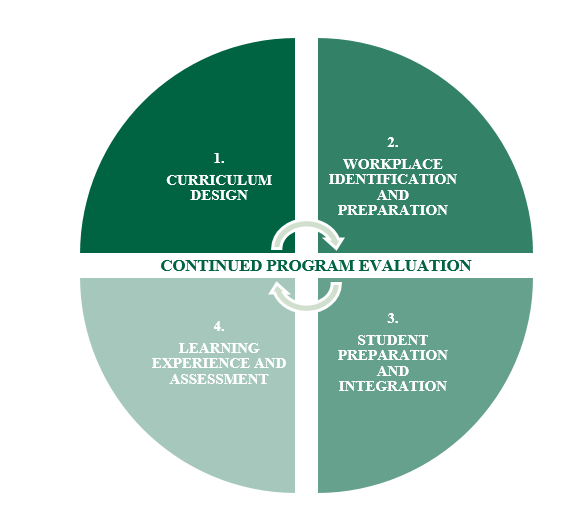WIL Conceptual Framework and Indicators
“Integrating curricular learning with workplace experience provides students with an opportunity to combine theory and practice in a real-world work environment, deepening students’ knowledge and understanding, and enhancing work-related capabilities.” (Cooper, Orrell and Bowden, 2010).
In order to design and implement rigorous and efficient WIL Experience:
- It is essential for the main WIL experience partners – students, workplace supervisors, and faculty share a common vision for the WIL experience.
- It is also crucial to clearly determine and support the roles and responsibilities of the WIL Experience partners – in terms of preparation, orientation, integration, coordination, support and assessment.
To do so, Algonquin College designed the following WIL Experience Conceptual Framework with 4 key dimensions and associated sets of indicators
WIL Experience Conceptual Framework

- 1. Curriculum Design
- 2. Workplace Identification and Preparation
- 3. Learner Preparation and Integration
- 4. Learning Experience and Assessment
- Description the purpose of the WIL Experience
- Description of the desired outcomes for all stakeholder groups
- Clearly articulated expectations of roles for all stakeholders groups
- Alignment of the WIL experience curriculum with the academic curriculum
- Alignment of the students experiential learning outcomes with the assessment practices